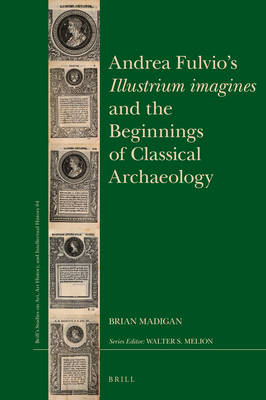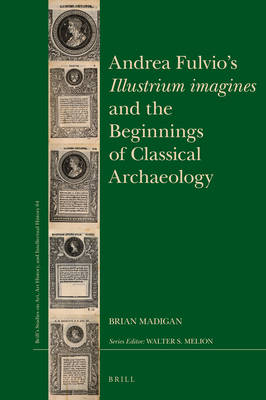
- Afhalen na 1 uur in een winkel met voorraad
- Gratis thuislevering in België vanaf € 30
- Ruim aanbod met 7 miljoen producten
- Afhalen na 1 uur in een winkel met voorraad
- Gratis thuislevering in België vanaf € 30
- Ruim aanbod met 7 miljoen producten
Zoeken
Andrea Fulvio's Illustrium Imagines and the Beginnings of Classical Archaeology
Brian Madigan
€ 185,95
+ 371 punten
Omschrijving
Andrea Fulvio's Illustrium imagines and the Beginnings of Classical Archaeology is a study of the book recognized by contemporaries as the first attempt (1517) to publish artifacts from Classical Antiquity in the form of a chronology of portraits appearing on coins. By studying correspondences between the illustrated coins and genuine, ancient coins, Madigan parses Fulvio's methodology, showing how he attempted to exploit coins as historical documents. Situated within humanist literary and historical studies of ancient Rome, his numismatic project required visual artists closely to study and assimilate the conventions of ancient portraiture. The Illustrium imagines exemplifies the range and complexity of early modern responses to ancient artifacts.
Specificaties
Betrokkenen
- Auteur(s):
- Uitgeverij:
Inhoud
- Aantal bladzijden:
- 236
- Taal:
- Engels
- Reeks:
- Reeksnummer:
- nr. 64
Eigenschappen
- Productcode (EAN):
- 9789004288126
- Verschijningsdatum:
- 21/10/2022
- Uitvoering:
- Hardcover
- Formaat:
- Genaaid
- Afmetingen:
- 155 mm x 234 mm
- Gewicht:
- 503 g

Alleen bij Standaard Boekhandel
+ 371 punten op je klantenkaart van Standaard Boekhandel
Beoordelingen
We publiceren alleen reviews die voldoen aan de voorwaarden voor reviews. Bekijk onze voorwaarden voor reviews.








